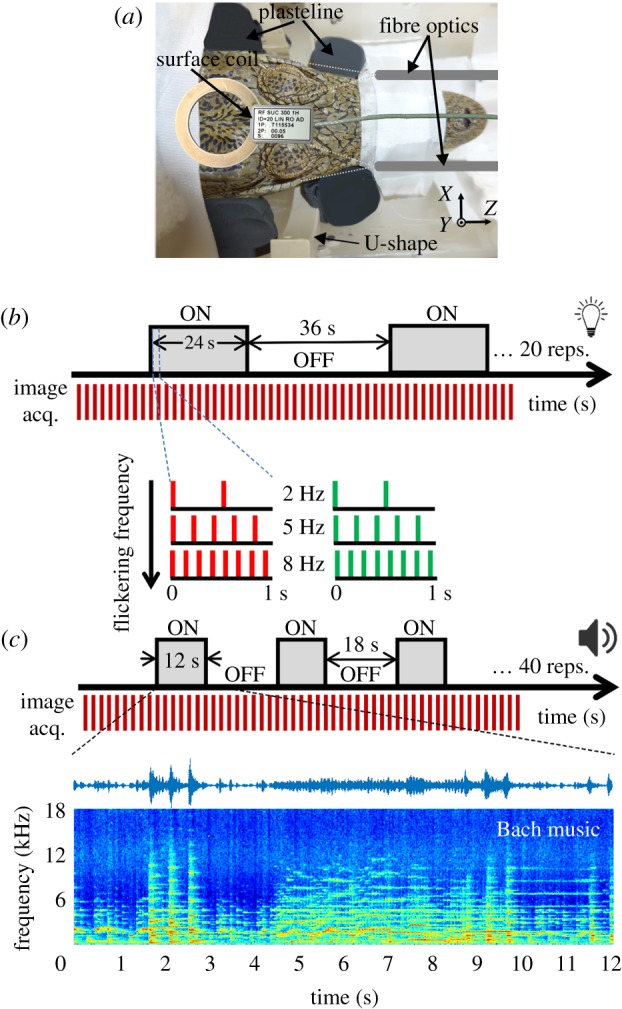Figure 1.

Experimental set-up and stimulation procedure. (a) Custom-made restrainer. Mildly sedated crocodiles were placed in an MRI compatible tube. To immobilize the animal in Y and Z directions, the snout, tail and back of the animal were taped to the tube. To control motion artefacts in X direction, the jaw and head were secured by blocks of Plasticine. (b) Timing of visual stimuli. The visual stimuli consisted of binocular visual stimulation using two different colours (green and red), with a flickering frequency at 2, 5 or 8 Hz. Each stimulus was presented in 20 repeated blocks consisting of 24 s light followed by 36 s darkness. (c) Timing of auditory stimuli. Three different stimuli were used to stimulate the auditory system. Random chords centred around 1000 or 3000 Hz were used as simple stimuli, while classical music (by Johann Sebastian Bach) was used as a complex stimulus. Stimuli were played using a speaker in front of the animals. Stimulation was done in 40 repeated blocks with each block consisting of 12 s sound followed by 18 s silence. As an example, the spectrogram of the classical music stimulus is shown.
